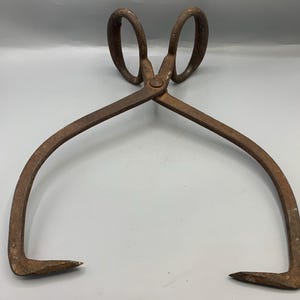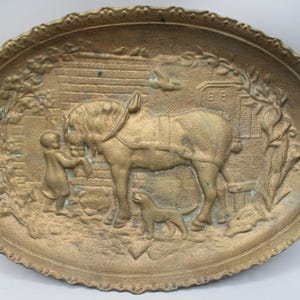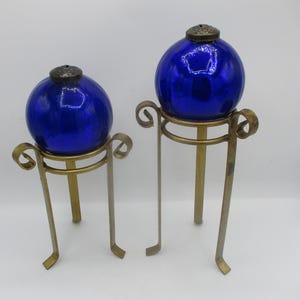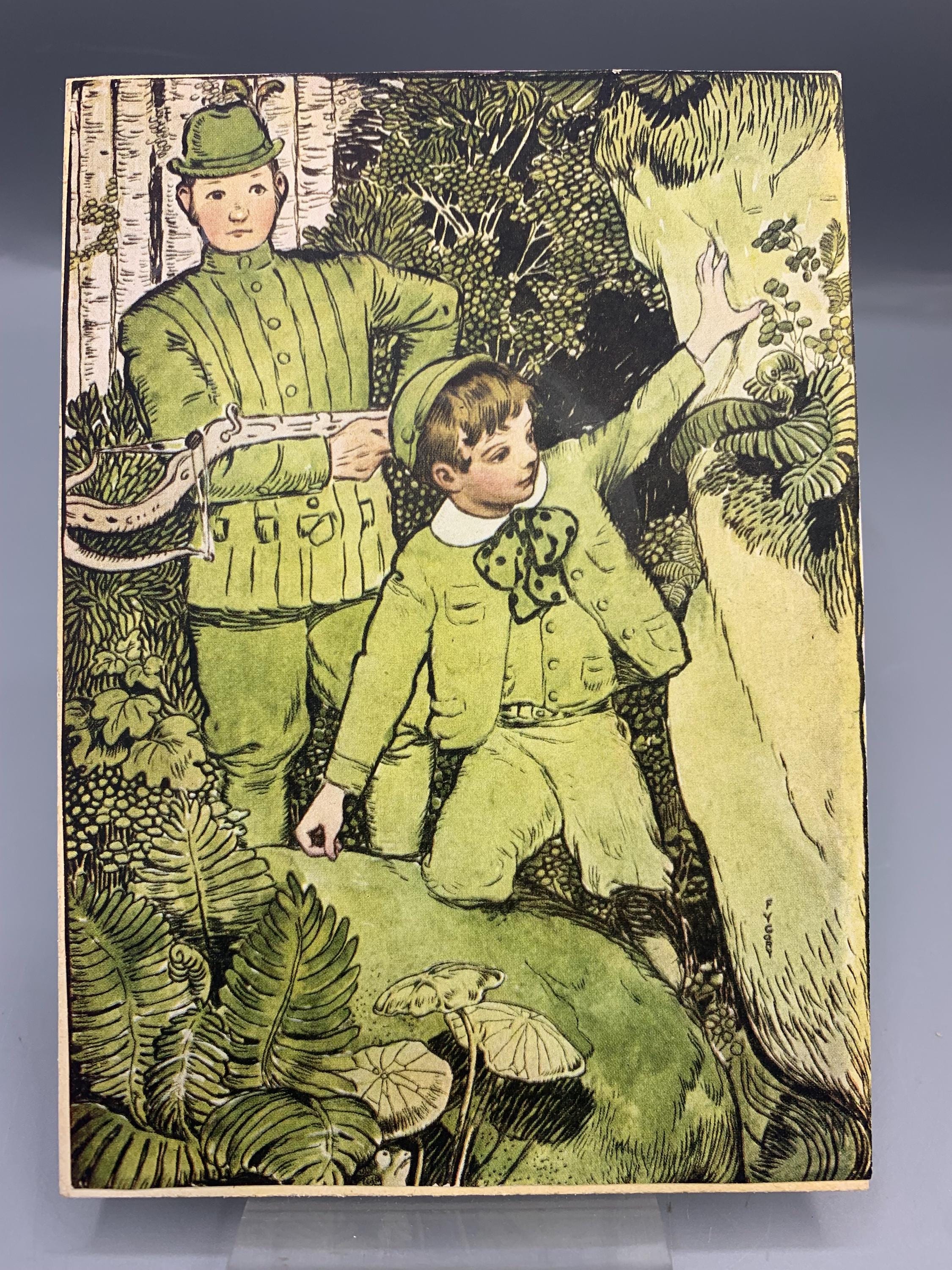
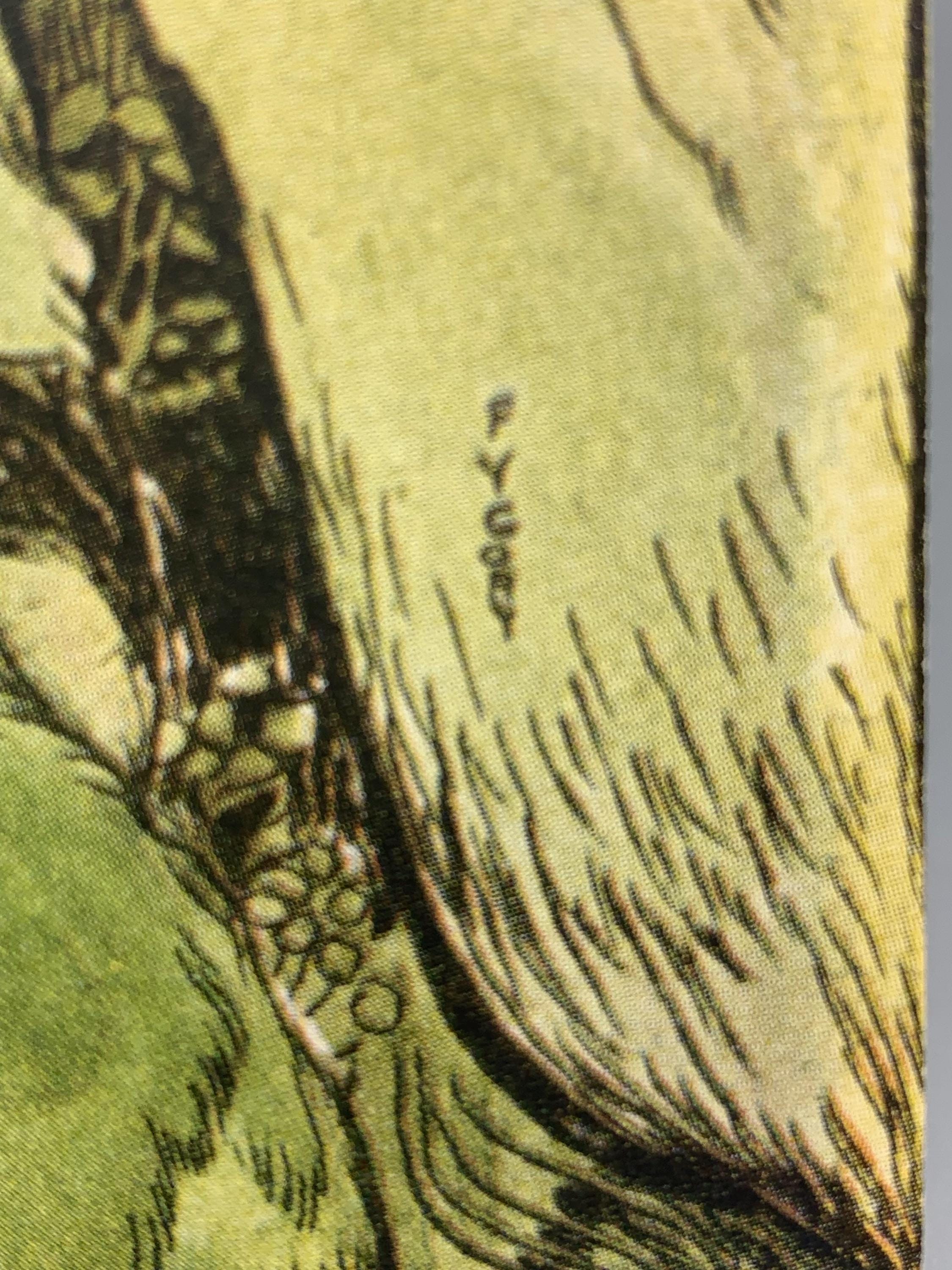
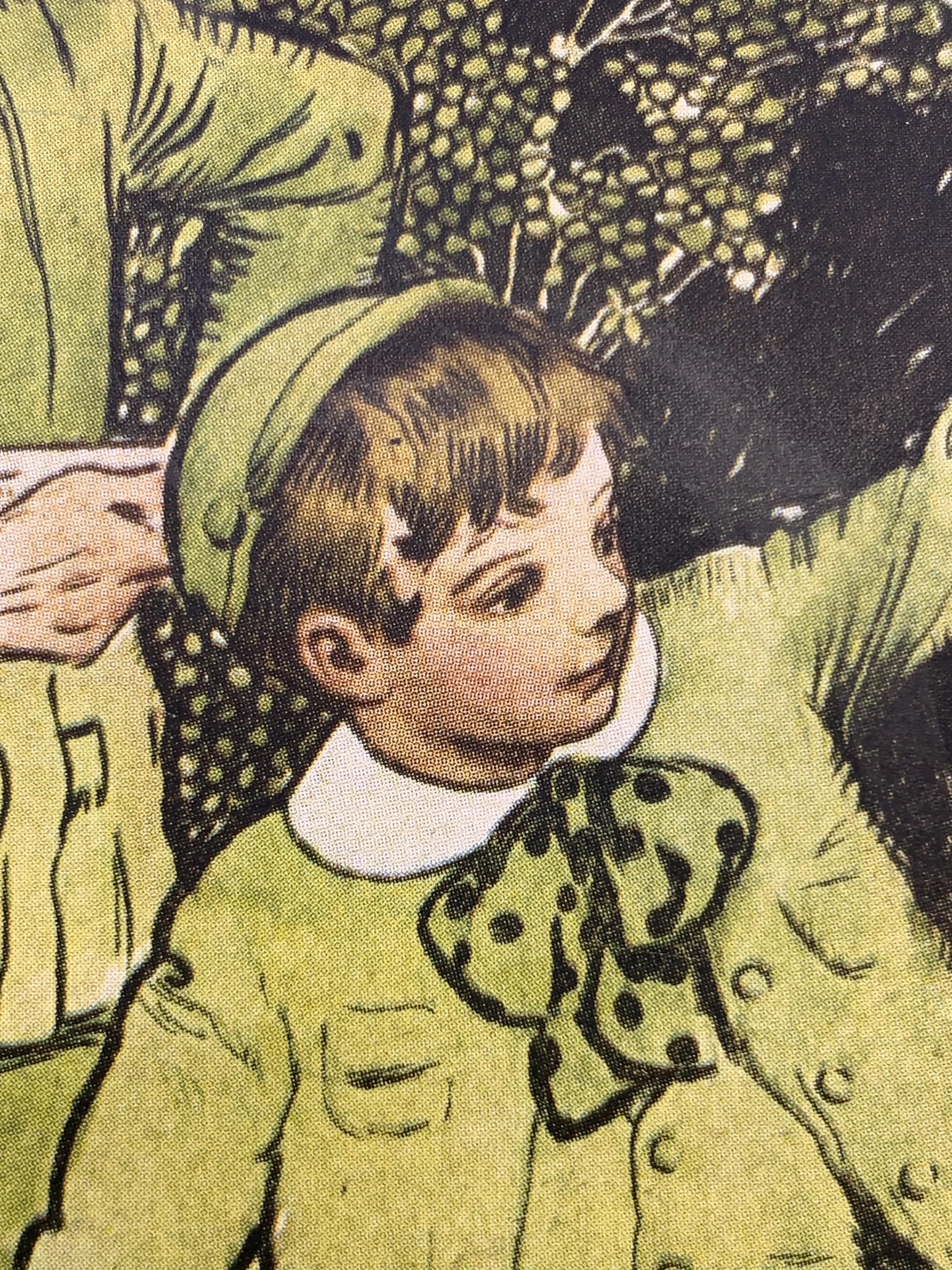
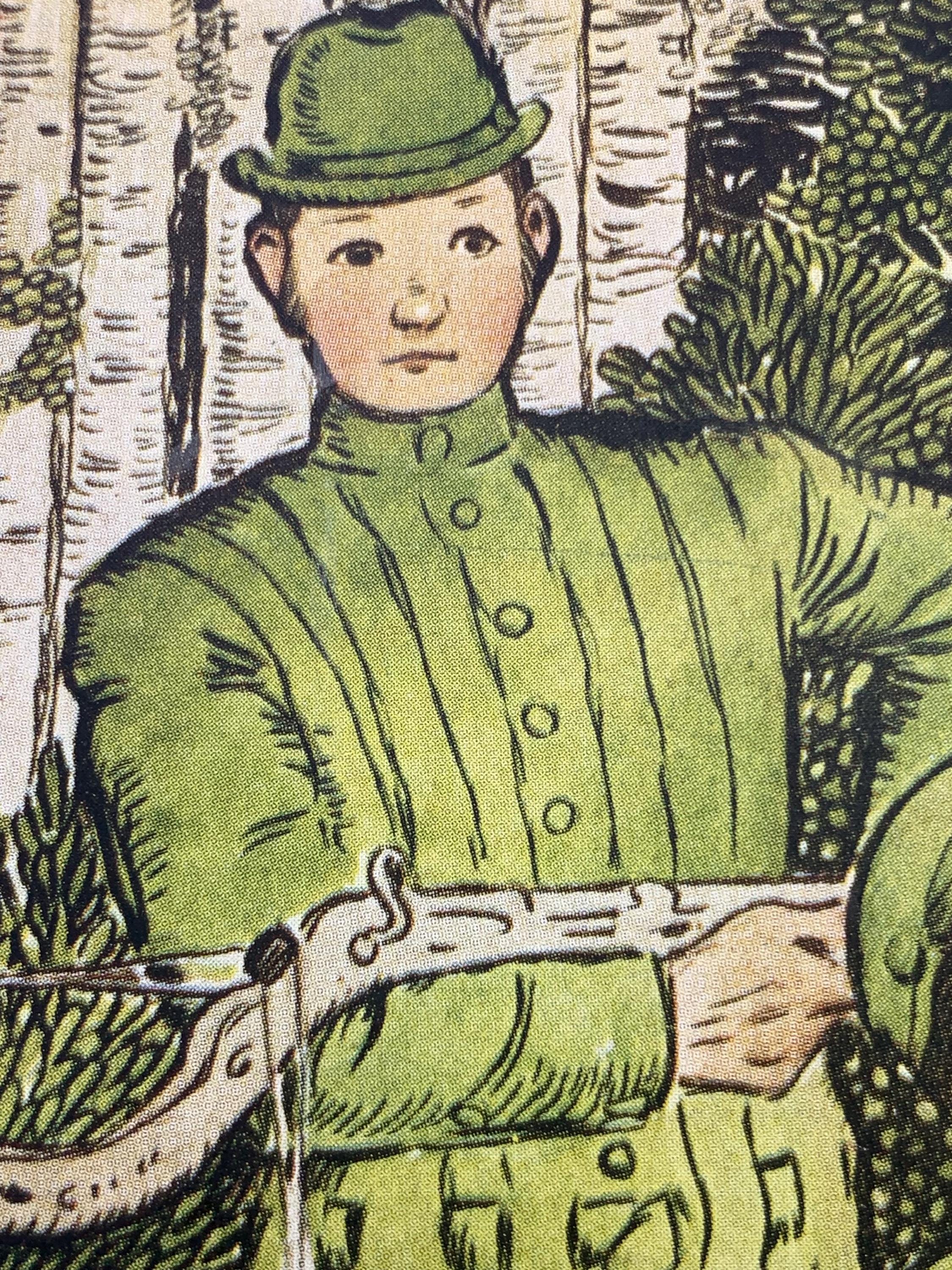
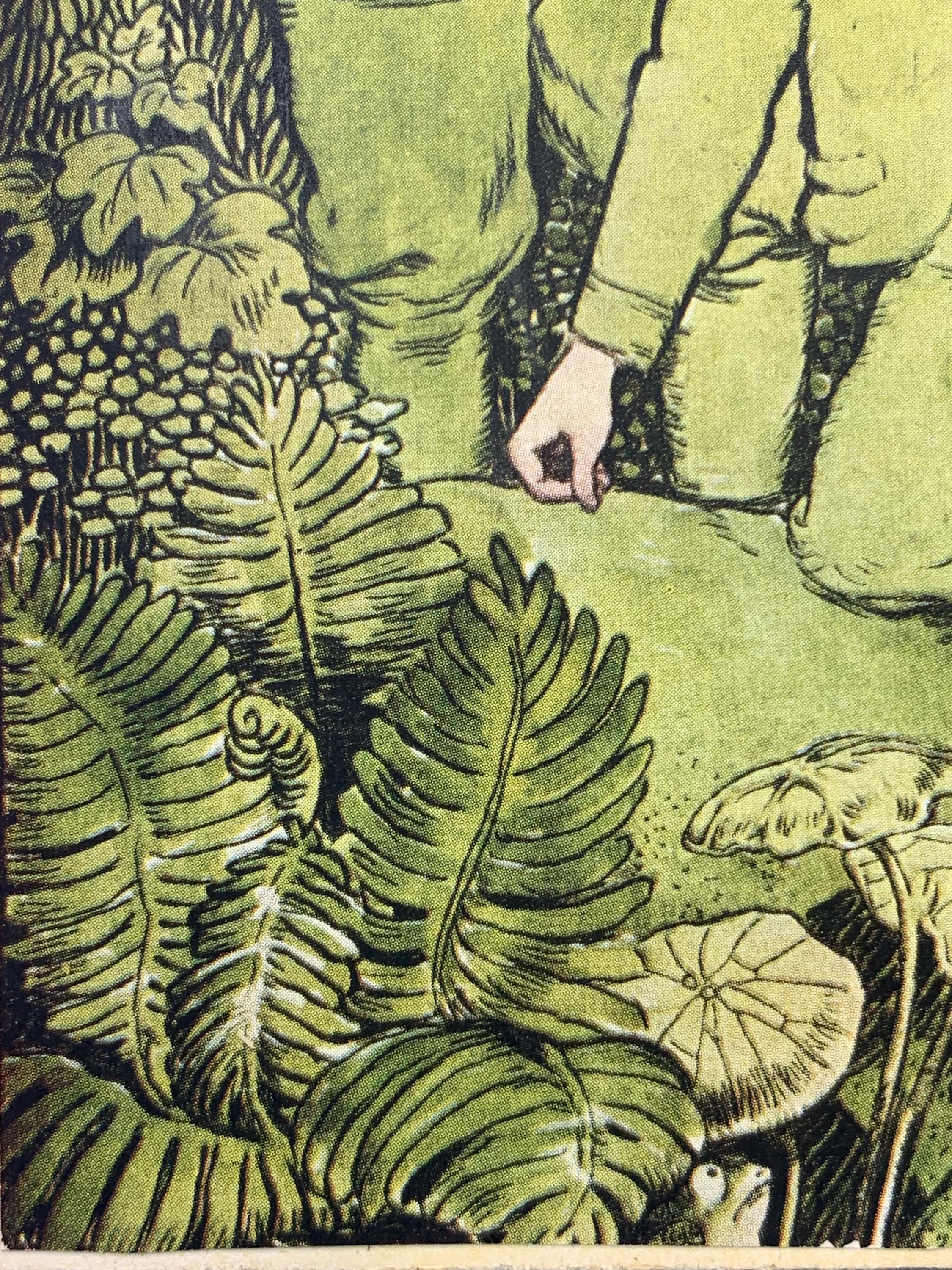
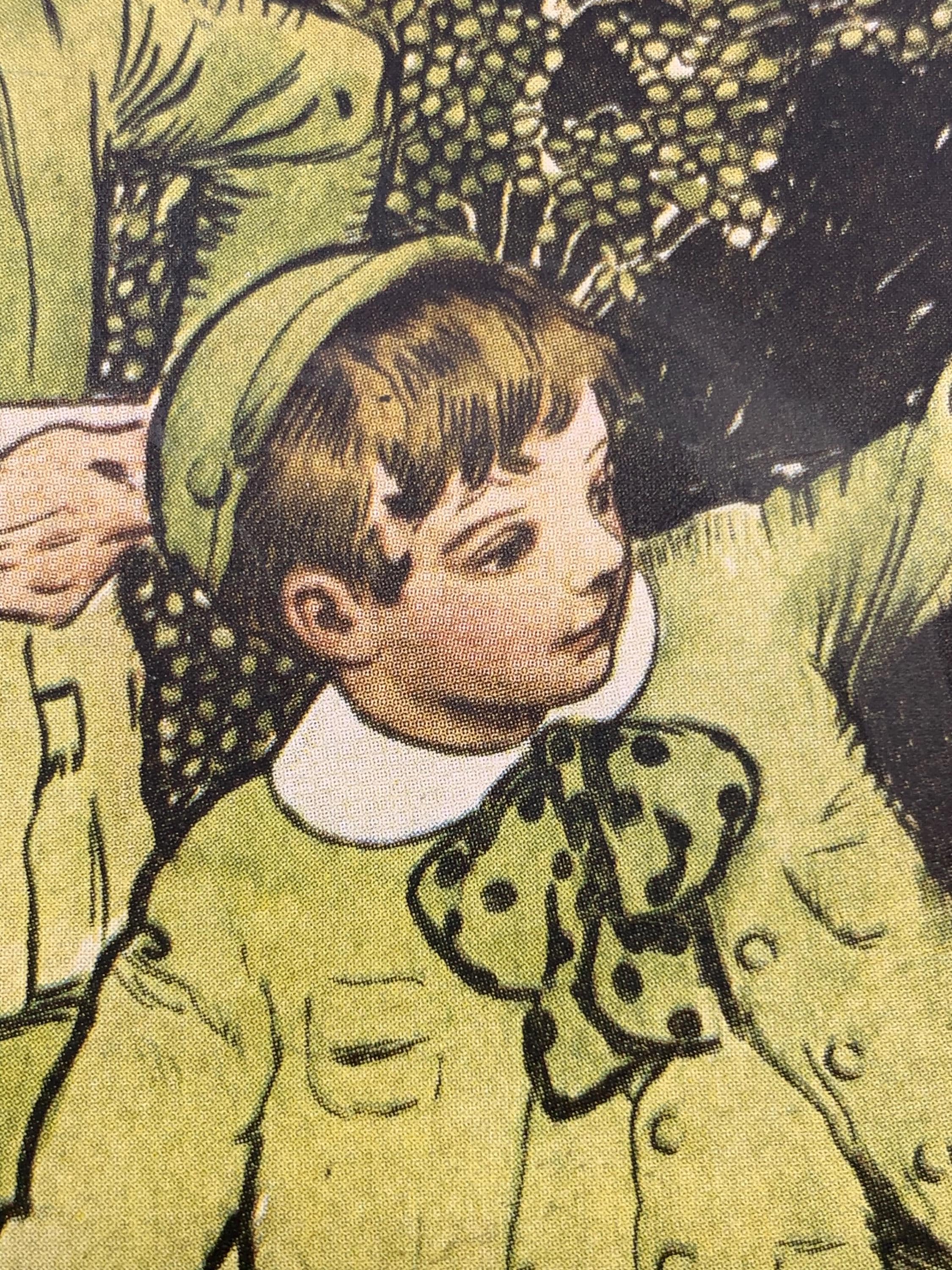
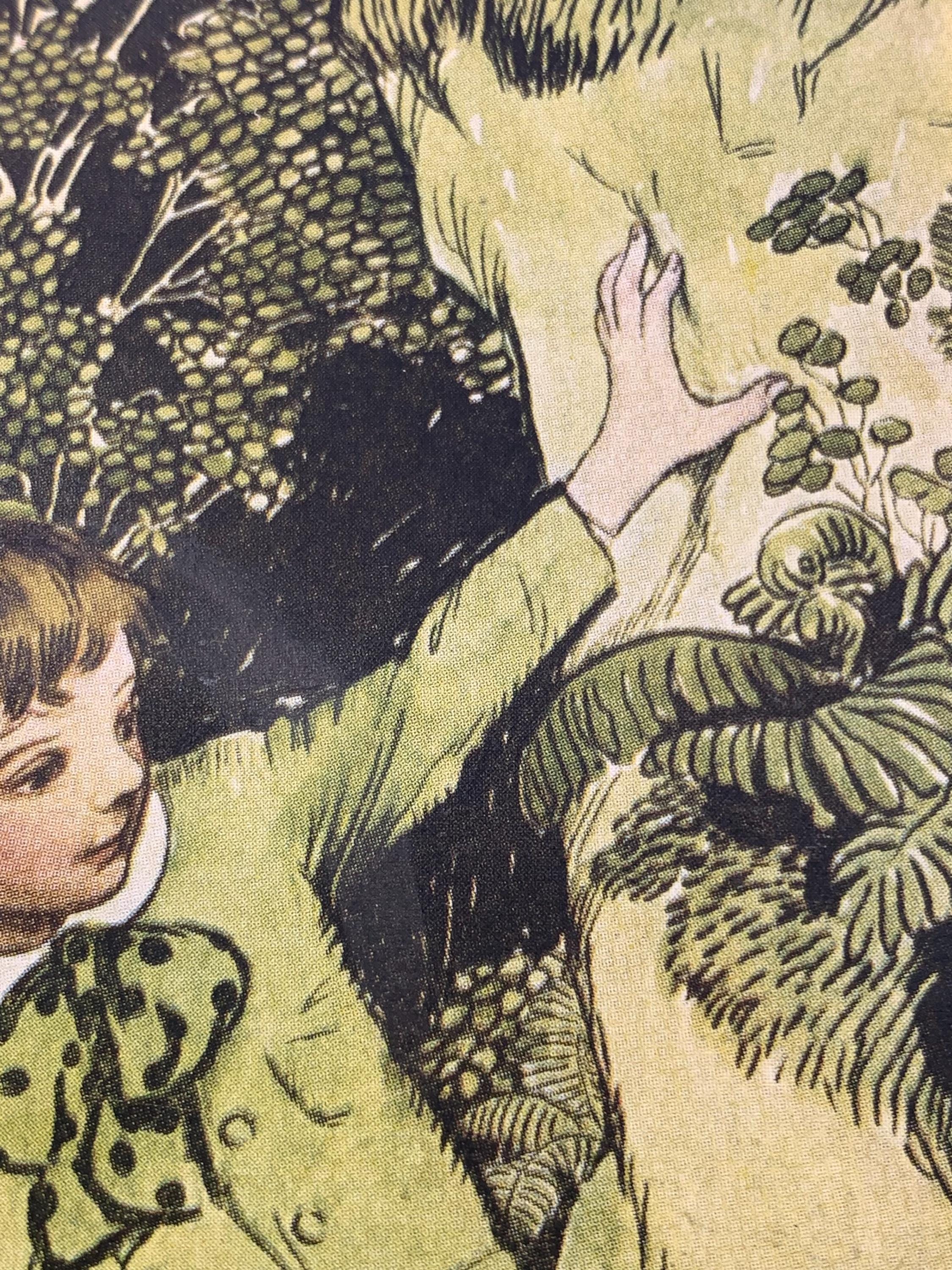
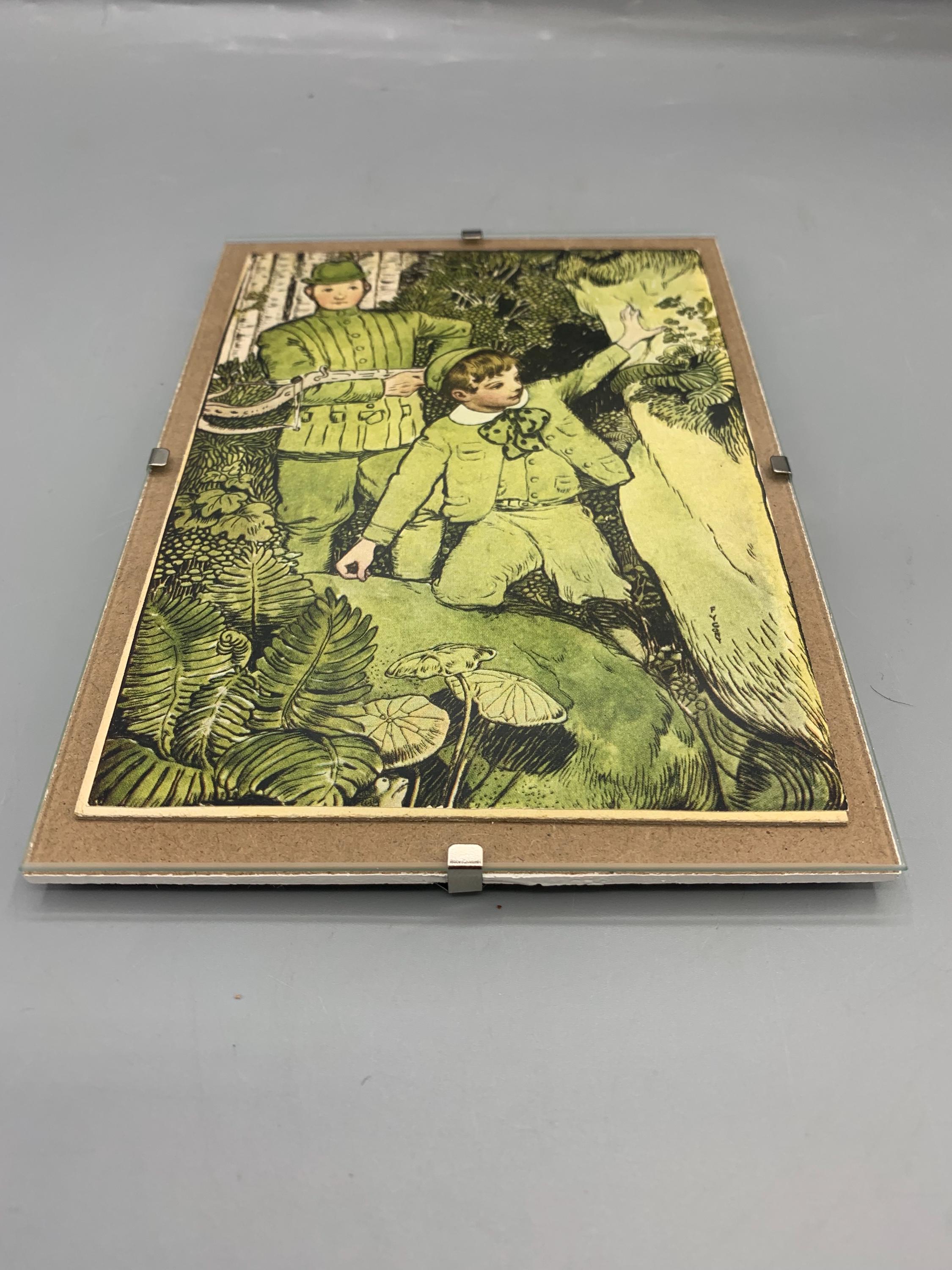
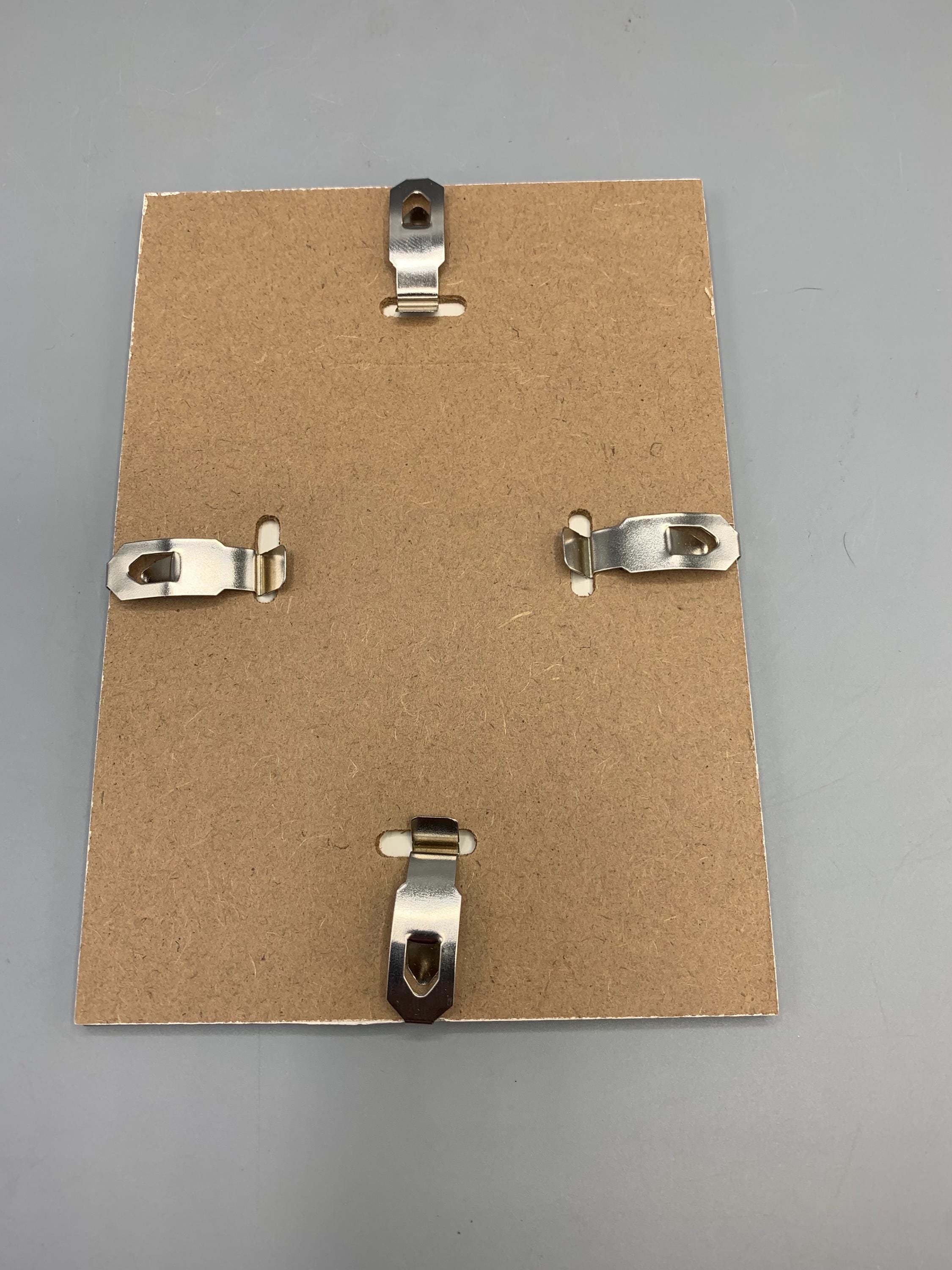
Antiques-100 Years Old +
1911 Children’s Book Chromolithograph-Artist Fanny Y. Cory, USA
$20.00
-
DetailsPublishing companies just don’t have artwork like they used to.
Today’s children books or picture books , have illustrations that are digitally photoshopped and copied.
But back in the late 19th century and early 20th century , the author would write their imaginary tales first before knowing what illustrations to use to bring visualization to the story. The pre-published story would be given to a cartoonist, sketch artist, or a notable book illustrator. That person would than read the material and create the book illustrations using their personal artistic skills. Once approved by the author, the full stories manuscript and cartoonist’s book illustrations are presented to a book editor of a publishing company.
From there the children’s book is printed and released for retail. This “piece of history “ is the actual page from the child’s book.
ABOUT THE CHILDRENS BOOK:
Jackieboy in Rainbowland written by author William L. Hill in 1911.
The story follows a boy named “Jackieboy” that was flying a kite one day and got swooped away by the wind. While holding on to the kite he drifted in the sky and dropped on a rainbow to take a magical tour of Rainbowland before landing on a pot of gold only to wake up to realize it was all a dream. Every “land” of the “rainbow” had different colors, characters and Art Nouveau settings. Places like Red Country with Hostess Red Riding Hood or Yellowville with Goldy Locks.
This illustration is from the part of the story when Jackieboy is going through Greenland with the Huntsman. Greenland in the story was said to be “Growing in the crannies were mosses and maidenhair ferns “as Jackieboy made his journey through Rainbowland’s color green.
ABOUT THE BOOK ILLUSTRATOR:
Fanny Young Cory (October 17, 1877 - July 28, 1972) was a cartoonist and book illustrator best known for her comic strips Sonnysayings and Little Miss Muffet. Cory was one of America's first female syndicated cartoonists.
Fanny Young Cory was born in Waukegan, Illinois, on October 17, 1877, the daughter of Benjamin Sayre Cory and Jessy Salter McDougall. 2 As a child, she drew or sketched on anything she could find. 31
When Cory was ten years old, her mother died of tuberculosis. Two years later, Cory's father moved the family to Helena, Montana. Cory was 14 when she began to study under artist Mary C. Wheeler, the art supervisor of the Helena school system. In 1894, her older brother Jack and his wife Bertha invited her
to stay in New York with them. Two years later, Cory enrolled at the Metropolitan School of Fine Arts. The following year, she was accepted by the Art Students League.
Even though she was a top student, Cory’s family had little money to spare for her education.
In addition, Cory wanted to help care for her sister Agnes, who had tuberculosis. So, Cory left school.
Wanting to support herself and her alling sister Agnes, Cory began selling her drawings. She made her first sale in 1898 to The Century Magazine. 131 As her career blossomed, Cory did covers and interior illustrations for magazines including Century, Harper's Bazaar, Life, Scribner's, The Saturday Evening Post and St. Nicholas.
Cory illustrated numerous books including a 1902 edition of Alice's Adventures in Wonderland and Through the Looking Glass by Lewis Carroll. She illustrated L. Frank Baum's books The Master Key and The Enchanted Island of Yew. 51 She illustrated Marion Hill's The Pettison Twins (McClure, Phillips & Co, 1906). Cory illustrated William L. Hill's Jackieboy in Rainbowland (Rand McNally & Company, 1911). Between 1913 and 1926, Cory decided to focus on raising her children, and she put her career on hold.
To relax, Cory began painting whimsical watercolors of fairies, flowers, birds, and other small animals. She made one for each letter of the alphabet, each one accompanied by a poem. She called them her "Fairy Alphabet." Cory considered these paintings her finest work, although she said she had no plans for them. The Montana Historical Society museum exhibited the paintings in the 1950s, but it was not until the 1980s that The Fairy Alphabet was published. The book was re-released by Riverbend Publishing in 2011.
Cory's first attempt at cartooning, Ben Bolt, or, The Kid You Were Yourself, flopped. But in the 1920s, needing money to send her children to college, Cory decided to try again. She began producing a single-panel cartoon called Other People's Children.
In 1926, Cory began her favorite comic, Sonnysayings, distributed by the Ledger Syndicate. It featured a precocious 5-year-old boy and his view of the world.
Sonnysayings appeared in many newspapers throughout the United States, Canada, Australia, and Scotland, under the name of Fanny Y. Cory. By 1935, Sonnnysayings had moved to King Features, where it ran until Cory's retirement in 1956. The cartoon was so popular that E. P. Dutton released a book collection in 1929.
In 1935, Cory launched Little Miss Muffet, syndicated by King Features until June 30, 1956. Designed to compete with Little Orphan Annie, the cartoon featured the adventures of orphan Milly Muffet and her dog. (Little Miss Muffet was written by Tecla Scheuring from 1940 to 1946.) A Little Miss Muffet comic book was published in 1948 and 1949 by Best Books.
Cory returned to Montana in 1902 after the death of her sister Agnes. Her brothers, Jack and Bob, wanted to try their luck at gold mining, and they invited their sister to join them. The siblings had three cabins built northeast of Helena, not far from the mine.
Cory called hers a "studio."
In 1904, Cory married Fred Cooney and moved to his ranch on the Missouri River
near the community of Canyon Ferry. She embraced ranch life, creating her illustrations with her drawing board in her lap as she sat by the window in the living room of the ranch house. She planted large gardens, canned the produce, and decorated her canning labels with illustrations. The couple had 3 children: Sayre, Robert, and Ted. In 1951, Cory was named Montana Mother of the Year. Cory retired in 1956. She moved to the Puget Sound area to be near her daughter, Sayre. She died in 1972 in Stanwood, Washington. -from Wikipedia
ABOUT THE EDITOR AND PUBLISHING:
Rand McNally is an American pioneer in publishing history.
In 1856, William H. Rand opened a printing shop in Chicago and two years later hired a newly arrived Irish immigrant, Andrew McNally, to work in his shop. The shop did big business with the forerunner of the Chicago Tribune, and in 1859 Rand and McNally were hired to run the Tribune's entire printing operation. In 1868, the two men, along with Rand's nephew George Amos Poole, established Rand McNally & Co. and bought the Tribune's printing business.
The company initially focused on printing tickets and timetables for Chicago's booming railroad industry, and the following year supplemented that business by publishing complete railroad guides. In 1870, the company expanded into printing business directories and an illustrated newspaper. According to company lore, during the Great Chicago Fire in 1871, Rand McNally quickly had two of the company's printing machines buried in a sandy beach of Lake Michigan, and the company was up and running again only a few days later.
Rand McNally maps are style used today. The first Rand McNally map, created using a new cost-saving wax engraving method, appeared in the December 1872 edition of its Railroad Guide. Rand McNally became an incorporated business in 1873; with Rand as its president, McNally as vice president, and George Poole as treasurer. The Business Atlas, containing maps and data pertinent to business planning, was first published in 1876. The atlas is still updated today, now titled the Commercial Atlas & Marketing Guide. The Trade Book department was established in 1877, publishing such titles as The Locust Plague in the United States. Rand McNally began publishing educational maps in 1880 with its first line of maps, globes, and geography textbooks, soon followed by a world atlas. The company began publishing general literature in 1884 with its first title, The Secret of Success, and the Textbook department was established in 1894 with The Rand McNally Primary School Geography. Also in 1894, the company opened an office in New York City headed by Caleb S. Hammond, who later started his own map company, C. S. Hammond & Co.
Rand McNally published its first road map, the New Automobile Road Map of New York City & Vicinity, in 1904. In 1910, the company acquired the line of Photo-Auto Guides from G.S. Chapin, which provided photographs of routes and intersections with directions. Andrew McNally I| (son of
Frederick McNally) personally took photos on his honeymoon for the Chicago-to-Milwaukee edition. The company continued to expand its book publishing business, with best-selling children's books such as The Real Mother Goose in 1916 and Kon-Tiki in 1950.
Rand McNally was the first major map publisher to embrace a system of numbered highways. One of its cartographers, John Brink, invented a system that was first published in 1917 on a map of Peoria, Illinois.
In addition to creating maps with numbered roads, Rand McNally also erected many of the actual roadside highway signs. This system was subsequently adopted by state and federal highway authorities. The oil industry quickly developed an interest in road maps, enticing Americans to explore and consume more gasoline. In 1920, Rand McNally began publishing road maps for the Gulf Oil Company, to be freely distributed at its service stations. By 1930, Rand McNally had two major road map competitors, General Drafting and Gousha, the latter of which was founded by a former Rand McNally sales representative. The Rand McNally Auto Chum, later to become the ubiquitous Rand McNally Road Atlas, debuted in 1924. The first full-color edition was published in 1960 and in 1993, it became fully digitized.
This book illustrations was printed using the chromolithography and half-tone processes. While still potentially utilizing wood engraving for some projects. The specific method depended on whether the illustrations were in color or black and white, and the desired quality.
Rand McNally was known for its technical innovation in printing which led to the invention of chromolithography, which later became the predominant color printing method of the era. The process uses multiple lithographic stones, with each stone printing a different color. The process required precise registration, but produced rich, saturated color illustrations.
By the early 20th century, Rand McNally was a major publisher of children's books and educational materials, which would have heavily featured colorful illustrations. This made chromolithography a standard choice for their books.
For illustrations based on black and white photographs, Rand McNally would have used the half-tone process, which allowed for the reproduction of shades of gray.
A screen of fine dots and lines was used to break up the image into dots of varying sizes. The resulting plate could be printed alongside text using a standard printing press, unlike the separate process required for photogravure.
By 1911, this technology was well-established and used for reproducing photographs in books and magazines, allowing for far more detailed than wooden etched.
This is a wonderful find. It comes in a 5” X 7” protective frame but can be put in any green Art Nouveau style frame of your choice.
This antique piece of printed art would make a great gift for any collector of old or to put as a conversation piece in a nursery. NOT A REPRODUCTION OR MODERN PRINT
MemoryLaneVintiques picked this item at an estate sale in Highland Village, TX
MemoryLaneVintiques sanitizes all glassware, jewelry, resin made, wooden and glazed pottery
before packing for shipment....100% Guaranteed!
ETSY INTELLECTUAL PROPERTY POLICY
As a venue for artists, designers, and makers, Etsy takes intellectual property rights very
seriously. We comply with intellectual property laws and industry best practices in order to
maintain the integrity of our creative marketplace. This Intellectual Property Policy explains how
we address allegations of infringement, how authorized parties can submit reports of
infringement regarding content on our marketplace, and how Etsy sellers can respond when
their listings or shops are affected by a report.
ANY COPY AND PASTING OR PLAGIARIZING OF MATERIAL
ON MEMORYLANEVINTIQUES IS SUBJECT TO ETSY INVESTIGATION AND PENALTIES!
MemoryLaneVintiques researches also protect our shop from Intellectual Property Theft by
researching for violators of our material. Be respectful!
Chad & Jennifer Johnston (August 2024

